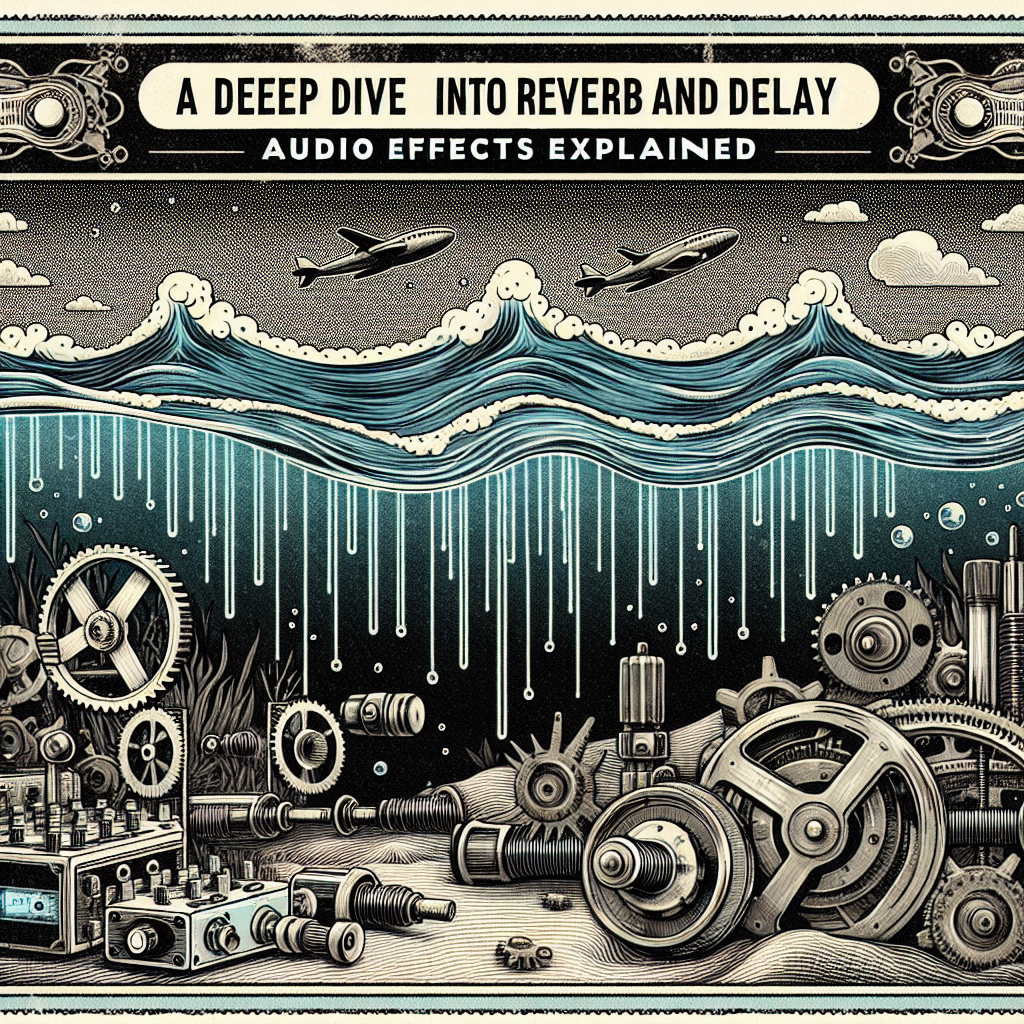Audio effects play an integral role in shaping the sound of recorded music. They add depth, breadth, and character to a mix, making it more attractive and engaging for listeners. Among these effects, reverb and delay are arguably the most ubiquitous. Understanding these two effects entails more than simply twisting knobs on an audio interface; it requires knowing how they work and when to use them.
The Fundamentals of Reverb
The term reverb, short for reverberation, refers to the persistence of sound in a particular space after the original sound is removed. When a sound source stops producing waves, those waves don’t just disappear—they bounce off the walls, ceiling, and any other surfaces. These bounced sound waves are what we hear as reverb. It’s akin to an echo, but rather than a single repeat of the sound, reverb is a myriad of echoes that create a ‘wash’ of sound.
Reverb can be natural or artificial. Natural reverb occurs in physical spaces, while artificial reverb is produced by digital or analog equipment. It’s a critical component in most musical productions as it provides a sense of space and depth in a mix.
The Mechanics of Delay
Similar to reverb, delay is the echo of a sound that arrives at the listener’s ear a short time after the direct sound. However, unlike reverb, delay is characterized by distinct repetitions of the original sound, separated by uniform intervals of time.
Like reverb, delay can be either natural or manmade. It can serve a variety of purposes in a mix, from adding texture and dimension to a single instrument to creating intricate musical patterns and rhythmic effects in a full band mix.
Applying Reverb and Delay in a Mix
Both reverb and delay can be applied creatively in a mix to enhance the musical aspects of a track, or functionally to correct or manipulate the perceived acoustics of a recording. When applied appropriately, they can add depth, space, and dimension to a mix, creating an immersive listening experience.
Different Types of Reverb and Delay
Different types of reverb and delay can be used to achieve unique sound characteristics. For example, with reverb, you have room, hall, and plate reverbs, each mimicking the acoustics of different physical spaces. Similarly, with delay, you have options like slapback delay, which gives a single repeat (ideal for rockabilly and classic rock genres); or ping-pong delay, creating a bouncing stereo effect.
Each of these types can create a specific atmosphere or mood in the music, influencing the overall character of the mix.
Conclusion
Reverb and delay are two powerful tools in any sound engineer or producer’s toolbox. They can add interest, depth, and dimension to a mix, and used creatively, can become intrinsic elements of the music’s character. However, like all audio effects, they should be used judiciously, striking a balance to prevent muddying the mix. A deep understanding of these tools is essential for producing high-quality and polished recordings.
FAQs
-
What is the main difference between reverb and delay?
While both are time-based effects, the main difference is that reverb creates a smooth wash of sound reflecting from various surfaces in a space, while delay produces distinct, repeat echoes of the original sound.
-
Can I use reverb and delay together?
Yes, using reverb and delay together can create a richer, more complex sound. However, it’s crucial to balance the two to avoid a cluttered mix.
-
Should reverb or delay be used first?
There’s no definitive rule, but starting with delay and then adding reverb can prevent the sound from becoming overprocessed. Experiment to see what works best for your mix.
-
Which types of delay are best for specific music genres?
Each genre has its characteristic sound. Slapback delay is commonly associated with rock and roll, while longer delay times are often used in dub and ambient music.
-
How do you add natural reverb to a recording?
Natural reverb can be added by recording in different spaces, such as a hall or well-designed studio. Alternatively, you can use convolution reverb plugins that sample real spaces’ acoustics.

